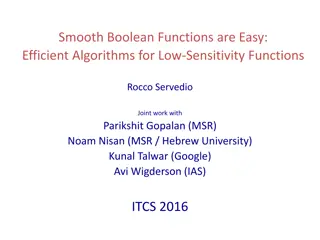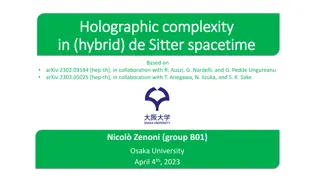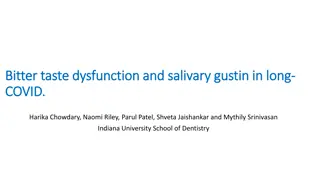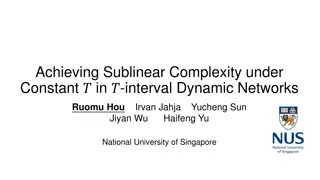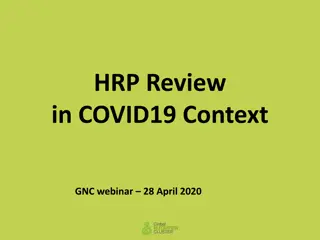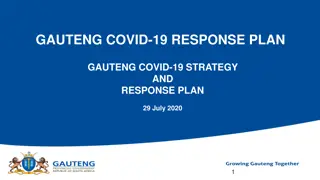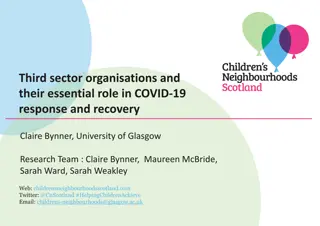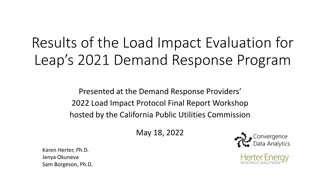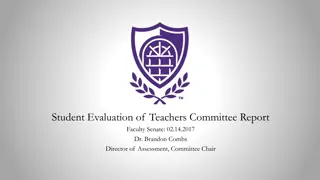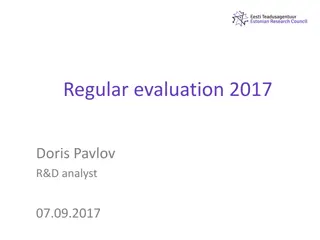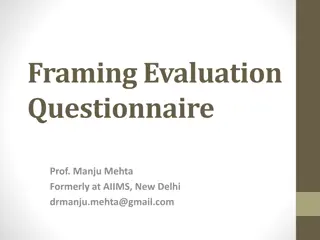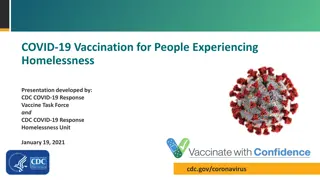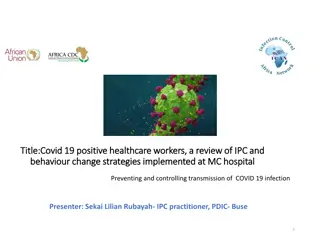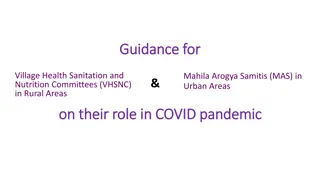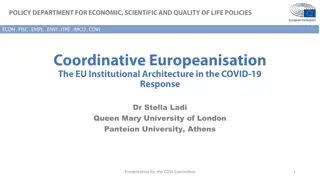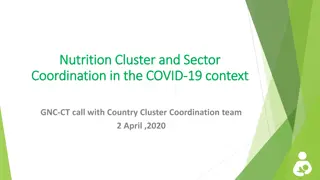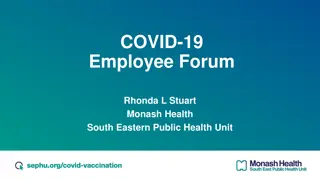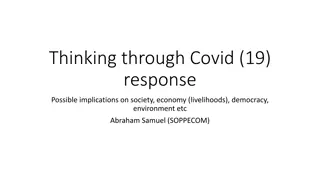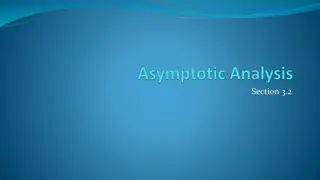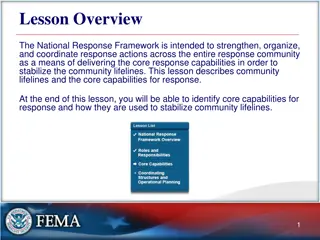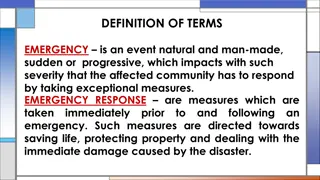Understanding the Complexity of COVID-19 Response Evaluation
The response to the COVID-19 pandemic involves a multifaceted approach, from microbiology to macroeconomics, encompassing numerous interventions that interact and compete. It requires meticulous attention to both entry and exit strategies, as well as adaptation in the face of political challenges. The UK's COVID evidence hierarchy highlights the importance of scientific advice and monitoring. The fringe agenda adds evaluation strategies like organizational learning and recycling evidence to improve response effectiveness.
Download Presentation

Please find below an Image/Link to download the presentation.
The content on the website is provided AS IS for your information and personal use only. It may not be sold, licensed, or shared on other websites without obtaining consent from the author. Download presentation by click this link. If you encounter any issues during the download, it is possible that the publisher has removed the file from their server.
E N D
Presentation Transcript
The Coronavirus Response: A Realistic Agenda for Evaluation ZOOM 3 July 2020 LEEDS Ray Pawson
Ovid on Covid! Causa latet, vis est notissima Translation: The cause is hidden; the effect is visible to all. Book IV, 287
Covers everything from micro-biology to macro- economics and all individual and institutional layers in between. Consists of scores of separate interventions which interact and may compete with and may stymie one another Requires as much if not more attention to exit as it does to entry Involves long implementation chains, which adapt and reinvent the interventions on their way to the public Is deeply contextual, with the same measures being tried with different outcomes in different countries Is continually buffeted by political dogfights, with almost daily changes in strategy and in action plans Consists of a complex, adaptive, self-transformative system, thrust into a complex, adaptive, self- transformative system Elements of complexity, the Covid response ...
THE UK COVID HIERARCHY OF EVIDENCE: KEY: 1:The Scientific Advisory Group for Emergencies (SAGE) 2: Modelling: Building scenarios of the potential outcomes of policy alternatives 3: Monitoring: Charting the daily shifts in prevalence, deaths, the R number etc. 0: Seven SAGE sub-committees on modelling, serology, clinical information, environment, children, hospital infection and behaviours. N.B. The social science remit is limited to the Sub-Group on Behaviours (SPI-B) whose task is to advise on improving adherence to government guidance. All research in the programme evaluation mode is largely off-stage . Critical voices led by practitioners, investigative journalism, fact-checking agencies etc.
The fringe agenda: incorporating five classic strategies from evaluation research 1. Encouraging organisational learning. Borrowing from the vast pool of knowledge on institutional restructuring via improvement programmes quality circles , service learning , etc. etc. Drilling down. Sub-groups of risk and resilience. What works for whom in what circumstances and in what respects. Recycling evidence. Learning from previous inquiries. The virus is unprecedented but there is little new by way of ideas in public health response. What do we already know? Anticipating the unanticipated: researching unintended consequences, blind spots and other unknown unknowns International comparisons: The same ideas are implemented the world over, with significantly different outcomes. A CMO story. 2. 3. 4. 5.
1. Organisational learning Hundreds of variations of this In the UK known as NHS Improvement Inner circles represent local learning in plan > execute > evaluate > change mode Outer circle represent national efforts to collect together and learn from the individual case studies
and not needed. Models predicted grave shortages of ICU beds and ventilators. Brand new mega- facilities built. New ventilators designed ICU learning: Triage policy to stratify patients at different risk levels and to create different patient pathways. Reutilise other ward space and create hot and cold areas/corridors Suspend much administrative and appraisal work Doubled and triple the number of doctors on rotas Augment staff from other areas Learn new techniques of intubation etc. Minimise risk of infection - segregate teams Train on both the donning and doffing of PPE Etc.
2. Drilling down: Sub-sub-groups of infection As with all diseases, Covid incidence and infection rates vary significantly by social situation and social grouping. Data quickly become available differentiating relatively high (red box) and low (green box) transmission rates. But there are always exceptions. Thus in, say, the higher risk groups and settings, there will be those who remain infection free. Analysis at the sub-sub-group level will begin to reveal key explanations for the different transmission rates.
Drilling down in the care home Covid infection and death rates in care homes were shockingly high in the UK. Explanations abound. Separation from the NHS provision. Chronic underfunding. Very poorly paid staff. Insecure employment conditions. Social distancing impossible, with patients with dementia and incontinence. Hopeless supply of PPE etc. etc. But it remained the case that some care homes were hot spots and some were infection free. Emerging Explanations. I. In the face of staff shortages some care home shared many temporary agency workers. II. In order to free up space, some hospitals discharged older patients to care homes without adequate testing.
3. Recycle existing evidence: review and synthesis Old message on evidence-based policy to be really useful, evidence should come before policy making. Hence the need to begin by reviewing previous research on similar interventions. There have been many official inquiries into the handing of previous epidemics. Sometimes they provide useful nuggets (e.g. on the overreliance on modelling). But for the most part they are bland (e.g. calls for better communication ). A better strategy is to take heed of the idea that the Covid response involves many different programmes and components. Strong evidence often exists on the implementation and effectiveness of these sub-processes.
Calling about symptoms: Lessons from 111? Used significantly more by middle-class callers and notably by the worried well . Used proportionally more by callers from white rather than other ethnic groups. Used significantly less by men rather than women Procedures took months to iron out. Low-paid, unskilled call handlers gradually replaced by staff with some clinical background. Provision remained in NHS rather than contracted out
4. Anticipating the unanticipated Supplies are plentiful there is no need for panic buying
Researching the Unintended (Covid & Crime) Bio-crime: Theft of biological tools, data, devices and systems Child and domestic abuse: Will they rise in the home as other crimes fall? Increased risk for isolated older people of being a victim of scams and cybercrime. Medical counterfeits - proliferation of fake medical and health products online Policing the lockdown impractibilities of enforcement when official guidance is ignored For a research agenda and potential solutions see: https://www.ucl.ac.uk/jill-dando-institute/research/covid-19-special-papers
A potential realist project on Learning the Lessons of Lockdown: International Comparisons . Basic configuration: Distancing and isolation measures reduce infection spread (M). They were introduced in most countries (C1, C2, C3, etc.) with significantly different outcomes (O1, O2, O3, etc.). Provisional theory. Differential effects follow in countries with highly compliant populations (e.g. China), those which relied on persuasion (e.g. UK), those that applied coercion (e.g. India) and those with polarized populations (e.g. USA). A more sophisticated theory emerges when the comparative evidence is collected and synthesised on half a dozen or so carefully selected case studies. 5. Same measure, different outcomes. Why?


